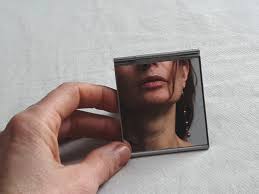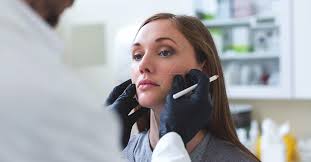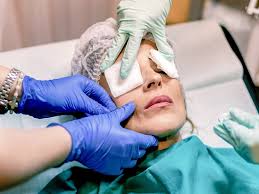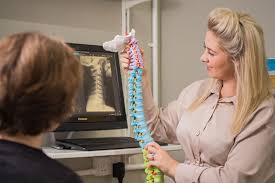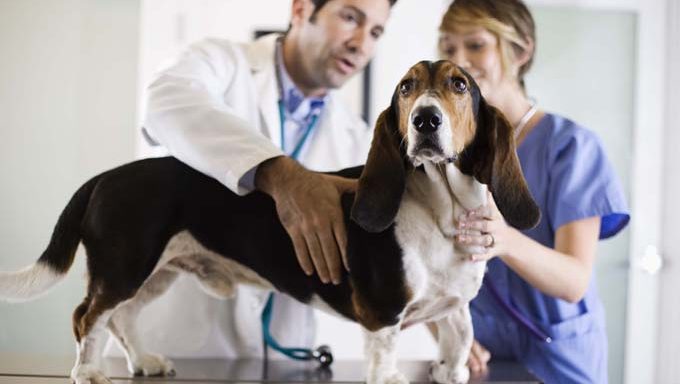How to Get Rid of Cavities
What causes cavities?
Dental cavities, or caries, are tiny holes in the hard surface of the teeth. They are caused by bacteria on the surface of teeth creating acid out of sugar. The most common culprit is a bacterium known as Streptococcus mutans.
The bacteria form a sticky film known as plaque. The acids in plaque remove minerals from (demineralize) your enamel — a coating of the teeth made mostly of calcium and phosphate. This erosion causes tiny holes in the enamel. Once the acid damage spreads into the dentin layer underneath the enamel, a cavity forms.
Getting rid of cavities at home
Many home treatments are based off of a studyTrusted Source from the 1930s that suggested that cavities are caused by lack of vitamin D in the diet. In this study, kids who added vitamin D to their diets showed a reduction in cavities. However, those who added vitamin D while also removing grain products from their diets had the best results. This is possibly because grains can stick to the teeth.
Not getting enough vitamin D may make teeth more susceptible to cavities, but we now understand that this is only a part of the puzzle. Other risk factors for cavities include:
- dry mouth or having a medical condition that reduces the amount of saliva in the mouth
- eating foods that cling to teeth, like candy and sticky foods
- frequent snacking on sugary foods or drinks, like soda, cereals, and ice cream
- heartburn (due to acid)
- inadequate cleaning of teeth
- bedtime infant feeding

Can you get rid of cavities at home?
However, some people prefer to use natural home remedies, rather than products containing fluoride. Some of these remedies include:
1. Oil pulling
Oil pulling originated in an ancient system of alternative medicine called Ayurveda. It involves swishing a tablespoon of sesame or coconut oil around in the mouth for a prescribed period, then spitting it out.
While some claims about oil pulling are not scientifically supported, research indicates that it can improve tooth health. A 2009 study found that using sesame oil in the pulling technique reduced the amount of plaque and bacteria to the same extent as mouthwash.
If oil pulling reduces plaque, this may help to remineralize enamel and prevent cavities. More studies are needed to confirm these effects.
2. Aloe vera
Aloe vera tooth gel may help to fight off bacteria that cause cavities. The antibacterial effect of this gel kills harmful bacteria in the mouth, according to a 2015 review.
While more research is needed, aloe vera gel may help to remineralize enamel at the pre-cavity stage.
3. Avoid phytic acid
Phytic acid may damage tooth enamel, and some believe that cutting it out of the diet can prevent tooth decay and cavities.
Phytic acid is most commonly found in cereals and legumes, including the following:
- maize
- wheat
- rice
- rye
- kidney beans
- haricot beans
- pinto beans
- navy beans
- blackeye beans
- broad beans
More research is needed to determine whether phytic acid affects the minerals in tooth enamel.
4. Avoid sugary foods and drinks
Consumption of sugar is among the leading causes of cavities. Sugar mixes with bacteria in the mouth and forms an acid, which wears down tooth enamel.
The World Health Organization (WHO) recommend that people prevent cavities by consuming fewer sugary foods and drinks, this 2016 review notes.

Getting Preventative Care
Get a dental check-up every 6 months.
During these visits your dentist will check on any past work that’s been done and look for any potential problems. They may suggest a treatment plan that requires additional visits or even give you medication to fight any infections.
- For example, if your dentist suspects gingivitis, they may give you a prescription mouthwash to use.
- Getting twice yearly teeth cleanings also prevents the accumulation of plaque, which can lead to cavities.
Take any mouthwashes as directed by your dentist.
If you are prescribed a mouthwash by your dentist, use it according to their directions and do not cut the treatment short. A mouthwash can prepare your mouth for surgery or it can help you to avoid infections afterwards. It might also reduce the possibility of other teeth rotting.
- The mouthwash will likely come with a dosage cup for you to use and specific instructions regarding how long and how often to rinse.
Ask for fluoride treatments.
Your dentist can apply a fluoride treatment to your teeth during a regular office visit. This coating protects your teeth from additional rotting, and can make fillings last longer. Fluoride carries very few side effects.
- Ask your dentist about fluoride toothpaste. This is a great way to get extra fluoride if a coating treatment is not an option.
- If your child is suffering from rotting teeth, be careful when using fluoride toothpaste or treatments. Exposing a child to extra fluoride can actually speed up any damage to teeth.
Consider getting your teeth professionally sealed.
This is a coating that your dentist applies with a small brush to your teeth. It takes only minutes, but it can protect your teeth from additional damage. Getting your back teeth (molars) sealed is an especially good idea.
- Most dentists will not seal teeth that are already beginning to rot due to cavities. This would only trap the bad bacteria inside. Talk with your dentist about other options for those damaged teeth.
Request a deep gum cleaning from your dentist.
If your rotting teeth are due to persistent gum problems, your dentist may be able to slow the decay by cleaning inside the gum flaps. This is an in-office procedure where your dentist will pull your gums away from your teeth and use tools to clean the exposed areas.

How does a cavity develop?
When a tooth is exposed to acid frequently — for example, if you eat or drink often, especially foods or drinks containing sugar and starches — the repeated cycles of acid attacks cause the enamel to continue to lose minerals. A white spot may appear where minerals have been lost. This is a sign of early decay.
Tooth decay can be stopped or reversed at this point. Enamel can repair itself by using minerals from saliva, and fluoride from toothpaste or other sources.
But if the tooth decay process continues, more minerals are lost. Over time, the enamel is weakened and destroyed, forming a cavity. A cavity is permanent damage that a dentist has to repair with a filling.
Options for restoring damaged or lost teeth
Your permanent teeth are designed to last for the rest of your life. But, sometimes, circumstances can keep your teeth from surviving as long as you do. There are a number of reasons why a tooth might be damaged, from tooth decay to gum disease and from an injury to biting down on something hard.
Although once upon a time, you might have simply had to live with a missing or otherwise damaged tooth, these days you have more options than ever when it comes to repairing or restoring the tooth. The option that is best for you depends on the extent of the damage and on how long you want the restoration to last.
FILLING
When you think of ways to repair or restore damaged teeth, a filling might be the first thing that comes to mind. It’s certainly the most common dental restoration option. While fillings won’t restore or replace entire teeth, they are used to correct damage caused by tooth decay. If you have a cavity, for example, your dentist will most likely use a filling to correct it.
Fillings are available in a variety of options and materials. Silver amalgam fillings were once fairly common, as they are cheap, easy to apply and pretty durable. The drawback of silver fillings is that they are clearly visible on the tooth. Composite resin or porcelain fillings might not have the durability of silver amalgam fillings, but they are usually the same color as the tooth and much less noticeable.
BONDING
Bonding is a quick option for restoring a chipped or broken tooth. The treatment involves applying a composite resin to the affected tooth, then shaping the resin until the issue with the tooth is corrected. A dentist can use bonding to reattach a piece of the tooth that has broken off or to fill in a chip or crack.
One advantage of bonding is that it is usually a one-and-done treatment. A patient only has to go in for treatment or correction once. There’s no need to wait for a replacement restoration to come in from the lab or for the patient to return for a follow-up.
CROWNS
While bonding or a filling might be sufficient to correct smaller issues on the teeth or to fix small areas of decay, a more extensive restoration is often needed when there is a considerable amount of decay. In some cases, a crown, which covers, or “caps,” the top of the tooth might be what a patient needs when there is a lot of decay or when the tooth cracks.
A crown is made to fit perfectly in the patient’s mouth and is often colored to match the shade of a person’s teeth. For the most part, other people aren’t able to tell that someone has a crown, unless that person decides to share the news.
Although crowns are fairly durable and can last for many years, you do want to take care to protect yours. Avoid chomping down on hard objects, chewy foods or pieces of ice. If you’re a teeth grinder, talk to your dentist about wearing a night guard or finding other ways to relax your jaw.
DENTURES
Dentures are designed to replace missing teeth completely. Depending on how many teeth a person is missing, he or she can have a full set of dentures, a single denture, or a partial set. Although dentures are meant to replace the entire tooth, they are also designed to be removable, so they aren’t anchored to the gums by a root. Instead, they are often held in place by pastes or clips.
One major advantage of dentures is that they are often an affordable restoration option. But, they also have several drawbacks. Since they aren’t a permanent part of a person’s mouth, they can move around, cause wear and tear on the surrounding teeth, and are generally uncomfortable. There have also been instances of people accidentally swallowing their dentures, if they didn’t take the dentures out at night or if the dentures came loose while eating.
IMPLANTS
You might think of dental implants as dentures’ more sophisticated younger sibling. They are more expensive than dentures, but they also have a number of benefits. For one thing, an implant replaces the damaged or otherwise lost tooth root, meaning that is firmly positioned in a person’s bone and gums, then covered with a realistic looking crown. Since a person can’t remove the implant, there’s no risk of swallowing it. Implants are also much more comfortable than dentures and can be brushed and cared for like the natural teeth.
